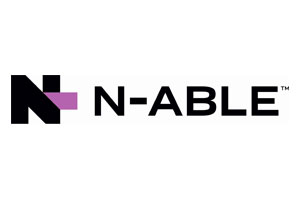An MSP’s Guide to Office 365 Data Loss Prevention (DLP)
From emails to document management, Office 365 services are a cornerstone for enhancing productivity and streamlining business communication. Microsoft 365 is not just a suite of applications; it’s a repository of your and your clients’ information.
Compared to on-prem systems, Microsoft Office 365 is less prone to cyberattacks or hardware malfunction but is still vulnerable to data loss. To deal with this risk, Office 365 data loss prevention (DLP) is an essential SaaS security function for MSPs.
On Prem systems and Microsoft 365 are both prone to cyberattacks and protecting data in each requires different strategies. M365 customers must first be educated that simply storing and using data “in the cloud” is not in and of itself a strategy for data protection. SharePoint and OneDrive data requires its own backup, and continuous monitoring of file activity is a valuable security method that can help flag external or internal bad actors who may be exfiltrating data. Microsoft’s DLP prevention tools extend this strategy by monitoring files for risky content such as personal identifiable information (PII) or medical data.
What Is Data Loss Prevention (DLP)?
DLP is a set of strategies, tools and processes that prevent the unauthorized access and transmission of information within an organization. The primary goal is to prevent breaches by identifying, monitoring and controlling sensitive data in motion, at rest and in use.
The key components of DLP solutions typically include:
| Component | Description |
| Content discovery | Identification and classification of sensitive data within an organization, scanning systems and networks. |
| Policy enforcement | Establishment and implementation of rules and policies governing how sensitive data should be handled. |
| Monitoring and analysis | Continuous tracking of data activities using content inspection, contextual analysis and behavior analytics. |
| Incident response | Automated or manual responses to policy violations, including blocking data transmission and sending security alerts to admins. |
| Encryption and tokenization | Implementation of encryption or tokenization to protect sensitive data from unauthorized access. |
| User education | Training and educating employees about security policies and responsible handling of sensitive data. |
Data Loss Prevention in Office 365
The vast amount of sensitive data processed within the M365 applications makes them potential targets for data breaches. Interestingly, one out of every five breaches originate from inside the company, per Verizon.
Data loss prevention in Office 365 is a specialized suite of security measures designed to safeguard sensitive information within the Microsoft productivity and collaboration environment. With the M365 data loss prevention policy, you automatically identify, monitor and protect sensitive data across:
- Office 365 services, including Teams, Exchange, SharePoint and OneDrive accounts
- Office applications (Word, Excel and PowerPoint)
- Non-Microsoft cloud apps
- Windows 11, Windows 10 and macOS endpoints
- On-premises file shares and on-premises SharePoint
- Power BI
What Are the Benefits of Data Loss Prevention for O365?
Implementing DLP for Office 365 offers a multitude of benefits that can significantly enhance your clients’ security posture. Here are some key advantages:
- Protection against data breaches
- Compliance with regulations
- Enhanced visibility and control
- Improved productivity
- Reduced insider threats
- Data integrity and availability
Features of Microsoft 365 DLP
The key features of Office 365 DLP include:
Integration with Microsoft 365 Applications
Whether users are sending emails, collaborating on documents or sharing files within Teams, DLP actively monitors and enforces policies, providing a comprehensive approach to data security. Leveraging the Microsoft Graph API and integration points within the M365 ecosystem, DLP ensures that data protection policies are applied across various applications and services.
Built-in and Custom Policy Templates
Microsoft 365 DLP offers a robust set of built-in policy templates that cover common types of sensitive data. These templates serve as starting points for organizations looking to implement data protection policies quickly. Security teams also have the flexibility to create custom policies based on unique data protection requirements, ensuring a more precise and targeted approach to safeguarding sensitive information.
Sensitive Information Types
Microsoft 365 DLP includes a comprehensive set of predefined sensitive information types, including personally identifiable information (PII), financial data and healthcare information. These predefined types serve as a foundation for identifying and classifying sensitive information within documents, emails and other files. MSPs can also create custom sensitive information types to address specific data categories relevant to their business.
Comprehensive Reporting
DLP Office 365 provides robust reporting features for organizations to access detailed insights into data protection incidents, policy violations and user activities. These reports also help review the effectiveness of DLP policies so administrators can make informed decisions about enhancing security measures. Analytics and reporting are also essential for compliance audits.
Deep Content Analysis
In addition to text scans, Office 365 data loss prevention employs advanced user behavior analysis to identify sensitive information. The content undergoes thorough examination through the following processes:
- Primary data matches keywords
- Evaluation of regular expressions
- Internal function validation
- Secondary data matches in proximity to the primary data match
- Machine learning algorithms to identify content aligning with your DLP policies
How to Implement O365 Data Loss Prevention
By strategically deploying M365 DLP policies, MSPs mitigate the risk of data breaches, adhere to regulatory requirements and foster a secure digital environment. The implementation process involves five key steps:
Step 1: Understand Your Data and Compliance Requirements
Before implementing M365 Data Loss Prevention, it’s crucial to have a comprehensive understanding of your clients’ data landscape and compliance requirements. Identify the types of sensitive data, such as personal information, financial records or intellectual property. Additionally, familiarize yourself with relevant industry regulations and internal policies that dictate how this data should be handled and protected.
Step 2: Create DLP Policies
The next step is to create DLP policies tailored to your clients’ needs. Use the M365 DLP console to define rules and conditions that specify how sensitive data should be handled. This includes setting up policies for email communications, document sharing and other data interactions within the Microsoft 365 environment. Leverage the built-in policy templates and create custom policies to address specific data protection scenarios.
Step 3: Test Your Policies
Before deploying the DLP policies across the entire organization, test them to ensure they effectively identify and respond to potential data breaches without causing disruptions. Use test scenarios and simulated data to validate the accuracy and responsiveness of your policies.
According to IBM, SOC professionals waste nearly 33% of their time each day on false positives. This testing phase allows you to identify false positives and fine-tune your policies for optimal performance.
Step 4: Deploy Your Policies
After successful testing, deploy the DLP policies to the production environment. This step involves activating the policies across the relevant Microsoft 365 applications, including Outlook, SharePoint, OneDrive and Teams. Ensure that policies are consistently applied and enforced across all user interactions with sensitive data.
During deployment, communicate the changes to users and provide training to enhance awareness of the new data protection measures.
Step 5: Monitor and Refine Your Policies
The implementation of M365 DLP is an ongoing process that requires continuous monitoring and refinement. Leverage monitoring and reporting features within the Office 365 DLP console to track policy violations, analyze incident reports and gain insights into user behavior.
This iterative process ensures that your data protection measures remain effective and aligned with your clients’ needs and compliance requirements.
Here are common examples of refining:
- Modifying the designated locations and individuals included or excluded from the scope
- Fine-tuning the conditions that assess whether an item aligns with the policy and specifying the corresponding actions
- Refining the definitions of sensitive information
- Introducing additional controls to enhance security measures
- Incorporating new individuals into the policy framework
- Expanding the list of restricted applications
- Including new sites within the restricted category
Discover the key steps to take if a Microsoft 365 breach occurs.
Leverage SaaS Alerts for Comprehensive Office 365 DLP
By combining the strengths of M365 DLP with SaaS Alerts, you achieve a comprehensive data protection strategy for your clients.
While M365 DLP focuses on content inspection and standard events, SaaS Alerts takes it a step further. Our platform offers deeper insights into file data usage, such as:
- Which file was shared
- Who shared it
- How it was moved
- To whom it was transferred
This granular approach provides administrators with a forensic depth of Office 365 DLP, creating a robust defense against unauthorized data sharing.
Start your free trial to better protect your client’s Office 365 environment with SaaS Alerts.







